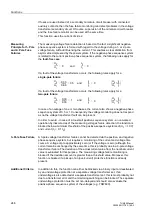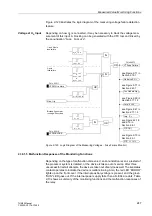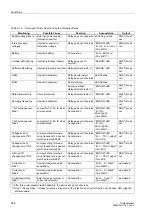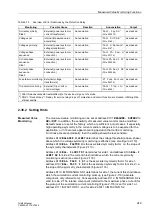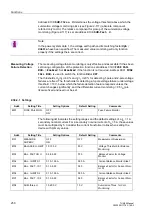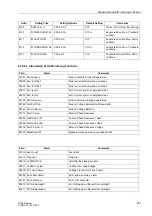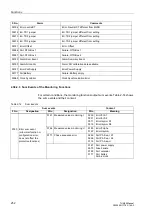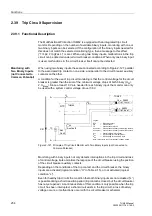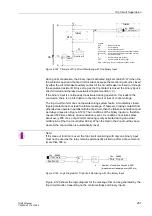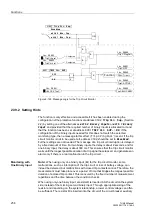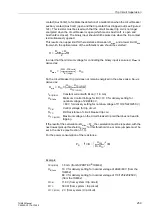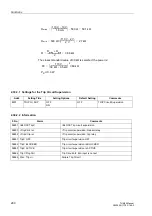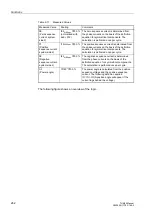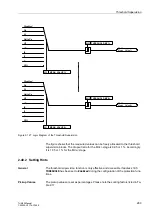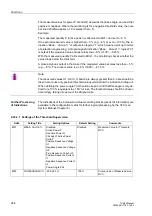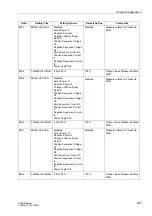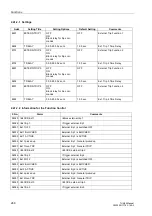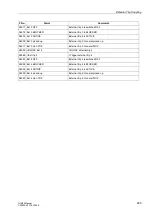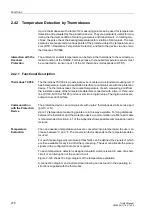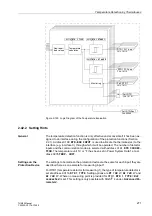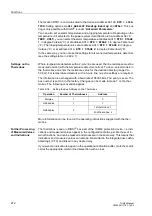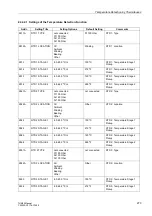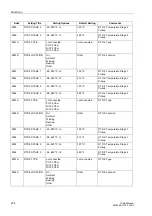
Trip Circuit Supervision
259
7UM62 Manual
C53000-G1176-C149-3
contact (AuxCont2), to facilitate the detection of a malfunction when the circuit breaker
auxiliary contact (AuxCont1) open and the trip contact has dropped out (see Figure 2-
124). This resistor must be sized such that the circuit breaker trip coil is no longer
energized when the circuit breaker is open (which means AuxCont1 is open and
AuxCont2 is closed). The binary input should still be picked up when the trip contact
is simultaneously opened.
This results in an upper limit for the resistance dimension, R
max
, and a lower limit R
min
,
from which the optimal value of the arithmetic mean should be selected:
In order that the minimum voltage for controlling the binary input is ensured, R
max
is
derived as:
So the circuit breaker trip coil does not remain energized in the above case, R
min
is
derived as:
If the result of the calculation is R
max
< R
min
the calculation must be repeated, with the
next lowest pickup threshold U
BI min
; for this threshold one or more jumpers must be
set in the device (see Section 3.1.3).
For the power consumption of the resistance:
Example:
I
BI (HIGH)
Constant current with BI on (= 1.8 mA)
U
BI min
Minimum Control Voltage for BI (= 19 V for delivery setting for
nominal voltage of 24/48/60 V;
= 88 V for delivery setting for nominal voltage of 110/125/220/250 V)
U
Ctrl
Control voltage for trip circuit
R
TC
DC Resistance of circuit breaker trip coil
U
TC (LOW)
Maximum voltage on the circuit breaker trip coil that does not lead to
tripping
I
BI (HIGH)
1.8 mA (from SIPROTEC
®
7UM62)
U
BI min
19 V for delivery setting for nominal voltage of 24/48/60 V (from the
7UM62)
88 V for delivery setting for nominal voltage of 110/125/220/250 V)
(from the 7UM62)
U
Ctrl
110 V (from system / trip circuit)
R
TC
500
Ω
(from system / trip circuit)
U
TC (LOW)
2 V (from system / trip circuit)
R
R
max
R
min
+
2
---------------------------------
=
R
max
U
St
U
BI min
–
I
BI (High)
---------------------------------
è
ø
æ
ö
R
TC
–
=
R
min
R
TC
U
Ctrl
U
TC (LOW)
–
U
TC (LOW)
---------------------------------------------
è
ø
æ
ö
⋅
=
P
R
I
2
R
⋅
U
Ctrl
R
R
TC
+
---------------------
è
ø
æ
ö
2
R
⋅
=
=


